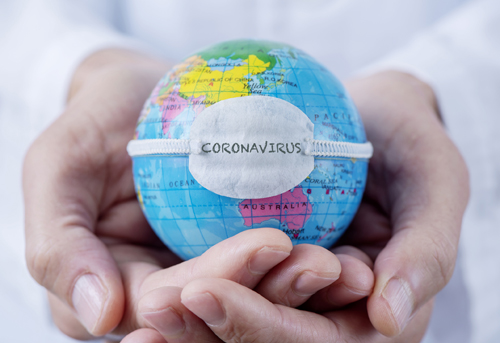MLHS COVID-19 Update April 20, 2020
April 20, 2020
This is an informational tool to help patients understand MLHS’s COVID-19 testing procedures and also what plans we have for surge (an influx of patients), and patient care. Do understand, however, that any of this could be modified and adjusted as the situation changes.
How is MLHS situated as far as preparedness?
MLHS works closely with the Central Minnesota Disaster Preparedness Coalition, a task force that helps hospitals in our region work together to develop plans for COVID-19 care. Currently, there is a 4-tiered approach to care for COVID patients in all spectrums of care, including ambulance service, emergency department, hospital, and nursing home. This approach helps facilities maintain situational awareness of facility needs, challenges, and connections to other regions. (MLHS hosted a disaster drill just last spring at Holy Cross Center, where a mock surge helped this regional group, and our own medical personnel, understand how the hospital would be impacted by just such an influx of ill patients.)
“We plan, train, and prepare for things like this, as all hospitals are required to do,” said MLHS COO Kim Kucera.
Who exactly is being tested at our facility and how does that work?
So, let’s say a person has cough, fever, and shortness of breath. These are symptoms consistent with COVID-19, so the person should call the COVID-19 Nurse Hotline at MLHS: (320-532-2989).
The patient is phone-triaged by a nurse trained to screen patients. Specific questions are asked. If the person does not need medical care and treatment, and the nurse determines that COVID-19 testing is not indicated, the person will be offered a TeleHealth visit, and told to stay home and isolate for 7 days and be 72 hour fever-free before resuming activities with work or family. The Minnesota Department of Health (MDH) is recommending that people who can stay at home and don’t need medical treatment stay at home. The focus is on testing patients who are in the hospital, sick workers in a healthcare setting, and nursing home or assisted living residents. However, the person calling in with symptoms is also instructed to come to the hospital if unable to breathe, drink or urinate; and patients should call back if they feel they are getting worse.
Nurse screeners who determine the patient is in need of a COVID-19 test after being screened on the phone will instruct the patient what to do next. The patient will be asked to go to the Onamia campus, enter door 1, and tell the person at the door that they have been phone screened. That information is available to medical staff so they can make a determination about next steps.
Patients needing attention for COVID-19 are triaged again when they arrive at MLHS and if necessary, they are tested. If they are requiring acute care assessment or medical intervention, they will be admitted to the hospital, to rooms designated for COVID-19 care.
It is taking anywhere from 7-10 days for test results to come back. If a patient who has tested positive but is recuperating at home suddenly feels much worse, has trouble breathing, they should alert the hospital that they are coming in to be re-assessed. Patients can do that via the hotline number.
Patients, no matter how they test (positive or negative), are called by our Infection Preventionist. If the test is positive, patients are given instructions for self-care at home. Again, any patient needing medical help for worsening COVID-19 symptoms can be assessed by a medical professional at the hospital.
The central Minnesota response plan presently is asking that MLHS admit suspected COVID patients who are very ill, or who have trouble breathing. Admitted patients are placed in isolation in special rooms MLHS has set up. In coordination with that plan, those that need a higher level of care will be transferred to a designated COVID facility. At this time, MLHS’s plan is to keep patients that we are able to keep, even if their tests come back positive. Anybody needing transfer will be transferred regardless of their test results. When necessary and if possible, MLHS providers can utilize telehealth w/ a specialist from CentraCare in situations where other professional assistance is needed.
“MLHS is a partner in the Central Minnesota Disaster Preparedness Coalition, and will be operating according to that organization’s plan,” said Kim Kucera. “As we move forward, situations may necessitate changes, but our patients should know that this group of facilities and professionals that we are a part of work together to provide the best plan for our region.”
